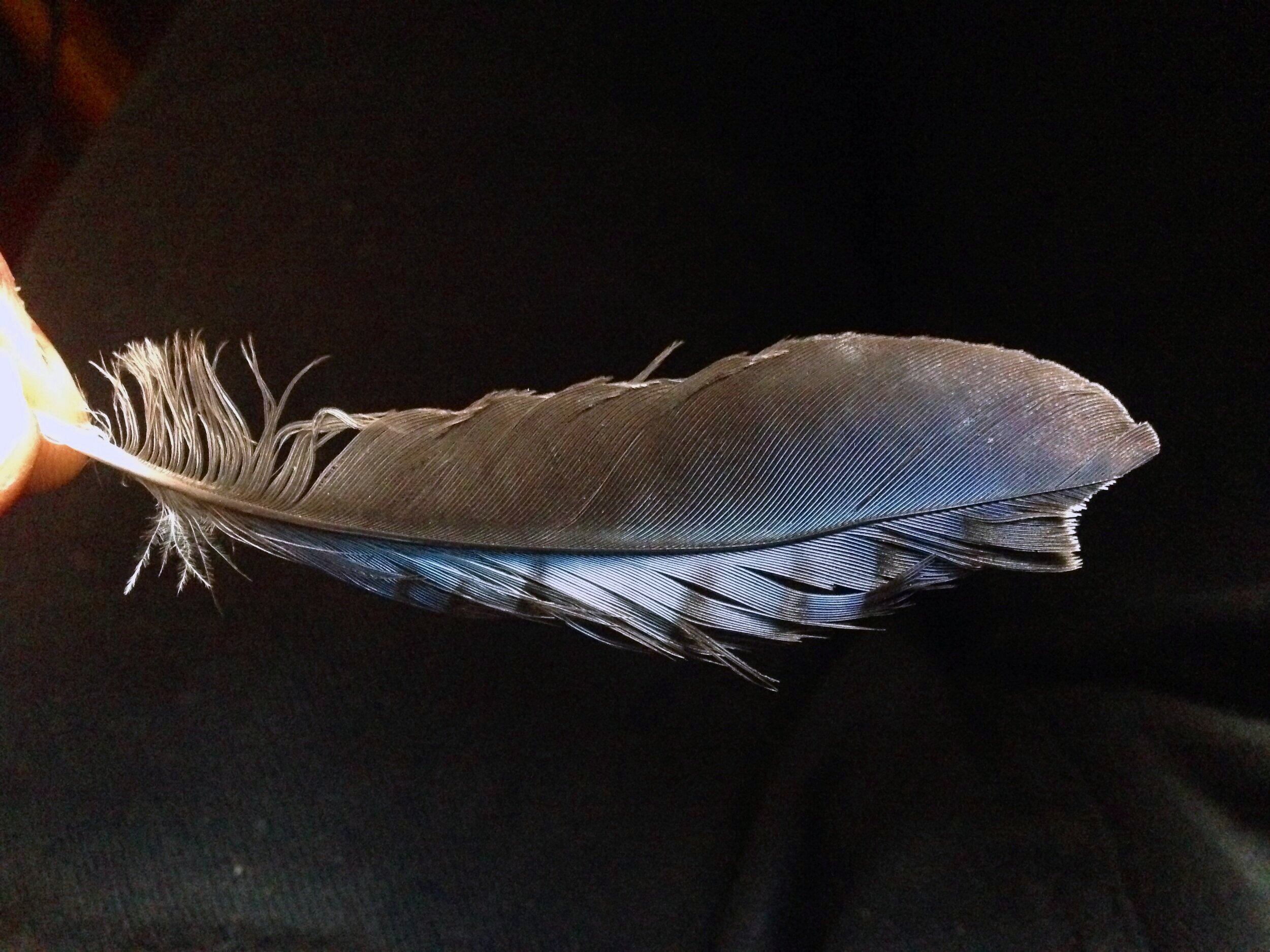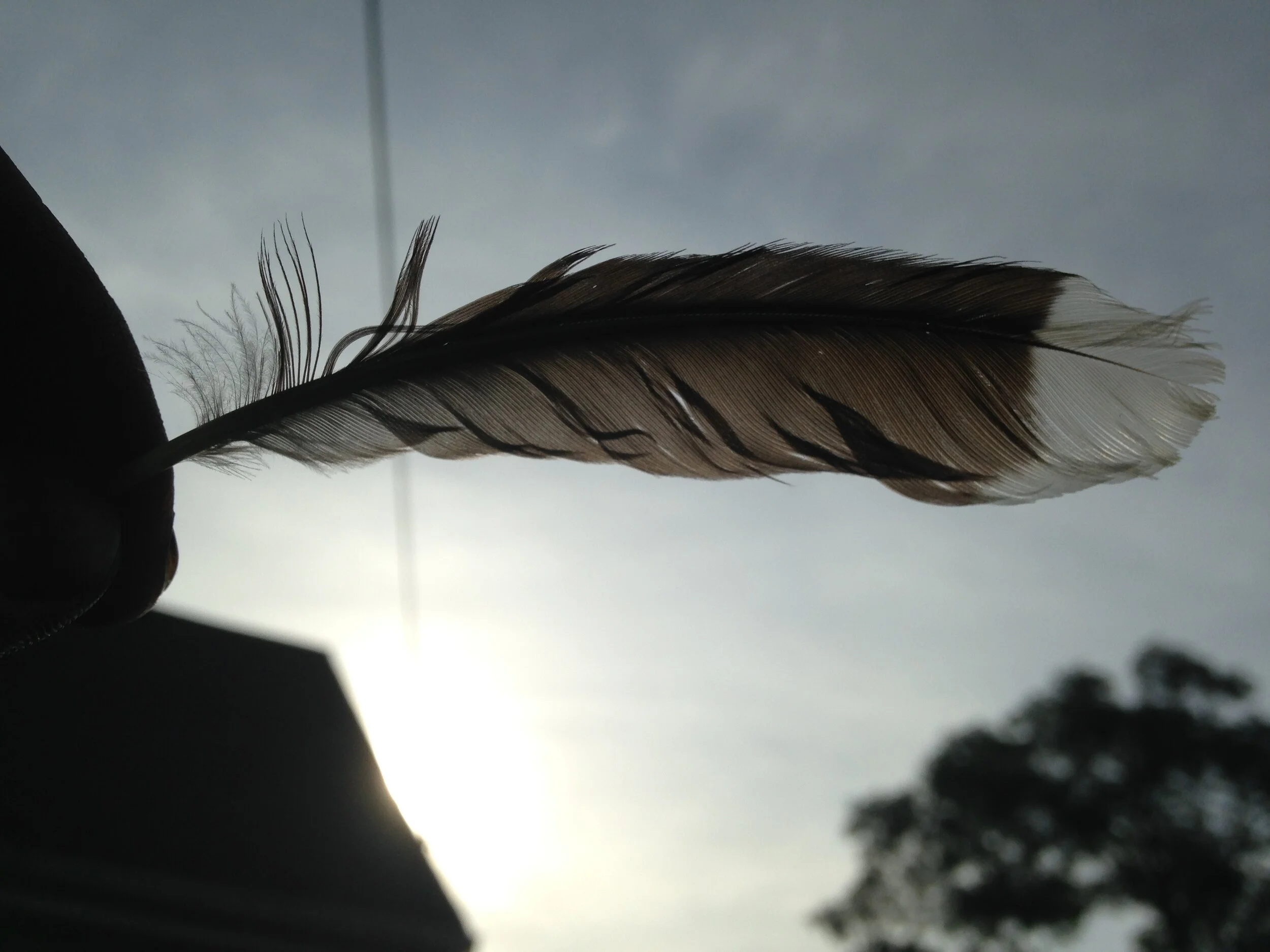White Fragility and Fake Blues in a Blue Jay Feather
Note the wear on what would be the white portion of the Blue Jay (Cyanocitta cristata) feather.
In “Bird Feathers” by S. David Scott and Casey McFarland, the authors describe how lighter or whiter parts of feathers break down more readily. One of the reasons is that darker feathers contain different pigments; carotenoids, porphyrines and melanins. Carotenoids, which produce yellows, oranges and reds, are found in bird feathers of birds who consume plants or the consumers of plants with carotenoids within them. This includes the Northern Cardinal (Cardinalis cardinalis) with their bright red feathers and large orange bill. These carotenoids display themselves in nature in all sorts of varied ways. One way, commonly encountered in the fall when the chlorophyll in deciduous leaves break down and the remaining carotenoids shine through with brilliant fiery reds, yellows and oranges.
As for porphyrins… well, to be honest, I don’t know much about them but I am learning. Some of what I have learned is that they are made from the breakdown of amino acids and hemoglobin in the liver. Most commonly porphyrins create browns, greens, reds and purple. I like purple.
One group of the pigments, collectively called melanin, helps create different darker colourations of the feathers. Two types of melanin in the group of pigments are eumelanin (translating literally to “true black substance”) which creates colours like black, grey, and brown, and then there is also the pheomelanin, which makes a light brown, brick-red, a dull yellow and tan colour. Both of these types of melanin are part of human physiology as well influencing the appearance of skin tone, and hair colour. The eumelanin leading to dark brown and black skin and hair, while the pheomelanin leads to red-orange colour as seen in freckles or red hair. Melanin makes those with increased levels, ie: darker hair, more resistant to UV rays protecting the hair against decay more so than light hair because of the higher photo-stability of eumelanin compared to pheomelanin. This applies to feathers as well. The missing white feather tip on the Blue Jay feather in the photograph above lacked the same UV protections as the darker areas of the feather, leading to increased rates of breakdown and making them more open to wear and tear.
Small compact particles of melanin, called melanin granules become enmeshed between keratin strands in barbules, increasing density and toughness in the keratin makeup of feathers. Feathers become stronger and more resilient with increased melanin. This may be related to what is known as Gloger’s Rule which states that the more humid the environment, the darker that animal will be. The heat and humidity will increase rates of decomposition, so the increased melanin helps to strengthen the feather against rot.
Now the trickier part. The white and the blue on the feather aren’t really there. The white and the blue are structural colours, meaning the feathers refract and distort light in such a way that they bounce back the whole colour spectrum, or specific frequencies, of light.
The barbs and barbules (the structural components of feathers) are made of proteins which are structured in such a way that as the light shines through the many intersecting proteins the light is then scattered, kind of like a prism. The light that bounces back from the feather structure can be any colour in the spectrum of visible and/or ultraviolet colours (many birds can see into the ultraviolet colour frequencies), but in the case of the Blue Jay (Cyanocitta cristata), or Indigo Bunting (Passerina cyanea), or Eastern Bluebird (Sialia sialis), it is the colour blue which is bounced back while the other colours are absorbed into the birds skin. If the structure of the feather is created differently, then more, or less, colours can be observed such as in iridescent feathers of a Common Grackle (Quiscalus quiscula) or the Wild Turkey (Meleagris gallopavo).
When a Blue Jay feather is backlit, like when you hold it up to the sun, you can see that the feather does not show blue, but instead a brown-grey, which is caused by the melanin granules in the feather, and again, these melanin granules are why this lower portion of the feather does not degrade as quickly as they fake white end does.
Backlit Blue Jay (Cyanocitta cristata) feather. This photo was very difficult to take.
To learn more :
S. David Scott and Casey McFarland, Bird Feathers (Stackpole Books, 2010), pg. 35-39.
Noble S. Proctor and Patrick J. Lynch, Manual of Ornithology, (Yale University Press, 1993), pg 90.
Melanin and the Abrasion Resistance of Feathers


